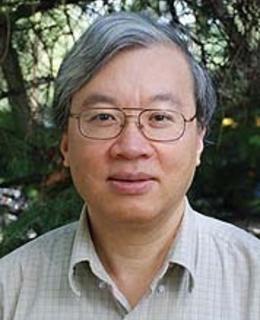
Sui-Lam Wong
Positions
Professor Emeritus
Contact information
Background
Educational Background
B.S. Biochemistry, Chinese University Hong Kong, 1977
M.Phil. Biochemistry, Chinese University Hong Kong, 1979
Ph.D. Biochemistry, University of California, 1983
Research
Areas of Research
My long-term research goals are to develop Bacillus subtilis, a gram-positive bacterium, as a microbial factory to produce biotechnologically important proteins via secretion and to design/produce interesting proteins in their natural and engineered forms. To develop the B. subtilis expression (secretion and surface display) systems, I have focused my research to four key areas:
(1) Regulation of gene expression. Glucitol induction mechanism is selected as a model system with the focus to study the structure and function of an ATP-dependent transcription activator protein, GutR.
(2) Cell surface display system. Engineering of cell wall protein for functional surface display of enzymes and enzyme complexes.
(3) Studies of molecular chaperon operons. Structural genes encoding B. subtilis GroES and GroEL were cloned and overexpressed to study the molecular chaperone mediate protein folding in vitro and in vivo.
(4) Extracellular proteases. Isolation and inactivation of chromosomal genes encoding extracellular proteases that degrade secreted proteins. This leads to the development of extracellular protease deficient strains for expression studies.
While the development and improvement of the secretion and surface display systems are in progress, several interesting proteins including single-chain antibodies, bacterial plasminogen activators (blood-clot dissolving agents) and streptavidin are selected to evaluate the effectiveness of this expression system. Certain novel and desirable properties will be introduced into these molecules through genetic and protein engineering.
More Information
Publications
- Wu SC, Wang C, Chin J, Wong SL. 2019. A bio-coupling approach using a dextran-binding domain to immobilize an engineered streptavidin to Sephadex for easy preparation of affinity matrix. Sci Rep. 9:3359. doi: 10.1038/s41598-019-40044-4.
- Wu SC, Wang C, Hansen D, Wong SL. 2017. A simple approach for preparation of affinity matrices: Simultaneous purification and reversible immobilization of a streptavidin mutein to agarose matrix. Sci Rep. 7:42849. doi: 10.1038/srep42849.
- Fogen, D., Wu, SC., Ng, KK., Wong SL. Engineering streptavidin and a streptavidin-binding peptide with infinite binding affinity and reversible binding capability: purification of a tagged recombinant protein to high purity via affinity-driven thiol coupling. PloS one. 2015;10(9):e0139137.
- Wu, S. C. & Wong, S. L. 2013. Structure-guided design of an engineered streptavidin with reusability to purify streptavidin-binding peptide tagged proteins or biotinylated proteins. PloS one 8: e69530.
- Barrette-Ng, I. H., Wu, S. C., Tjia, W. M., Wong, S. L. & Ng, K. K. 2013. The structure of the SBP-Tag-streptavidin complex reveals a novel helical scaffold bridging binding pockets on separate subunits. Acta crystallographica. Section D, Biological crystallography 69: 879-87.
- O'Sullivan, V.J., Barrette-Ng, I., Hommema, E., Hermanson, G.T., Schofield, M., Wu, S. C.
- Honetschlaeger, C.,Ng, K. K. and S. -L. Wong, 2012 Development of a tetrameric streptavidin mutein with reversible biotin binding capability: engineering a mobile loop as an exit door for biotin. PloS one 7: e35203.
- Liew, P. X., Wang, C. L. and S.-L. Wong, 2012. Functional characterization and localization of a Bacillus subtilis sortase and its substrate and use of this sortase system to covalently anchor a heterologous protein to the B. subtilis cell wall for surface display. Journal of Bacteriology 194: 161-175.
- Wu, S. C., K. K. Ng, and S. -L. Wong. 2009. Engineering monomeric streptavidin and its ligands with infinite affinity in binding but reversibility in interaction. Proteins 77:404-412.
Are you the profile owner?
Login to edit.
